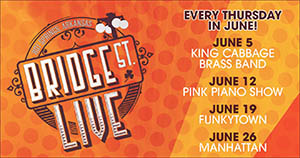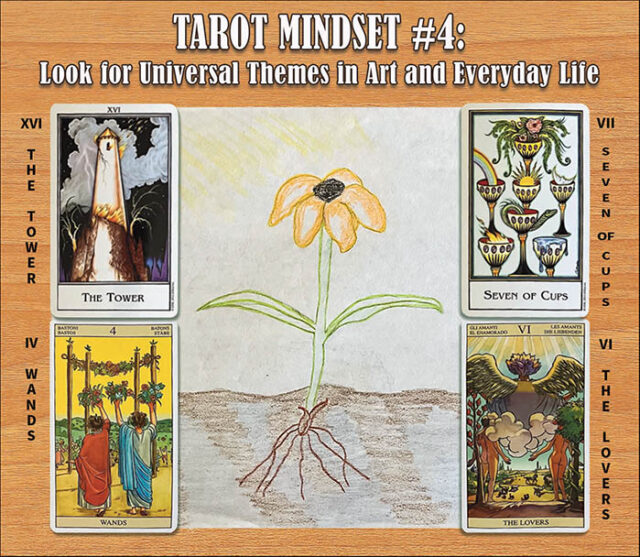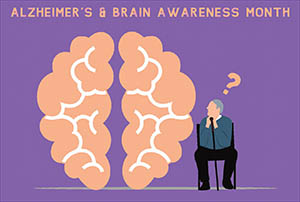When teaching Tarot, Michelle Crandell explores symbolic interpretations of a “flower,” drawn from four different cultures.
By Michelle Crandell
When I teach Tarot, my students are asked to draw a flower and interpret its meaning. Then, we explore symbolic interpretations of “flower,” drawn from four different cultures.
For example, in Oceanic cultures, the flower’s seed is the past; the stem and leaves are the present; the flower is the future, and the sky is “the place where all time lives.”
“Art imitates Life.” Poetry, paintings, performances, even perfumes…become works of art when the creation represents a universal theme. Go to an art museum and look for universal meanings in art. Notice what the artist symbolically expresses in the piece. Apply this skill to reading Tarot. When reading a card, you are interpreting visual art, focusing on what stands out for you at that moment, addressing a specific concern you want guidance on.
“Life imitates art.” Oscar Wilde’s statement indicates that our everyday experiences reflect universal themes and principles; themes like love, loss, and redemption. For example, Romeo and Juliet (in Tarot, The Lovers, reversed): a couple newly in love are opposed by societal forces. This happens in real life.
Another example: David and Goliath/Jack and the Beanstalk (The Tower, in Tarot), where the underdog defeats a seemingly more powerful, domineering foe through courage, strategy, or luck. Tarot cards depict such universal human experiences. A reading tells a story. Studying myths, legends, and fairy tales helps people better understand the meaning of Tarot cards.
Michelle Crandell provides individual Tarot readings for a fee. Once a year, she teaches LEARN TO READ TAROT. Call if interested in her next class. To learn more, email michelle.crandell@gmail.com or call 501-655-6242.









